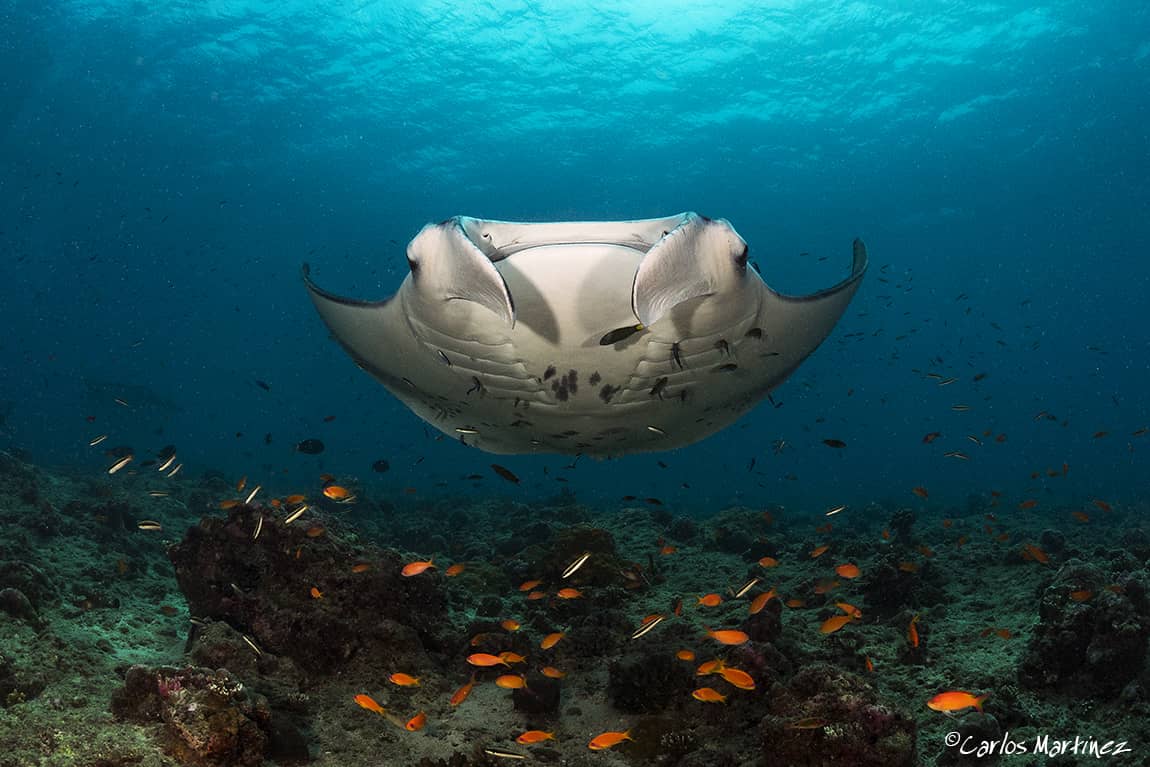Cleaning stations.
Mantas favorite place
The Maldives is probably the best place in the world to dive with manta rays.
The environmental conditions, the underwater orography, and the measures are taken for years to protect and preserve them have turned this archipelago into a perfect destination to dive with mantas.
Where can we see them?
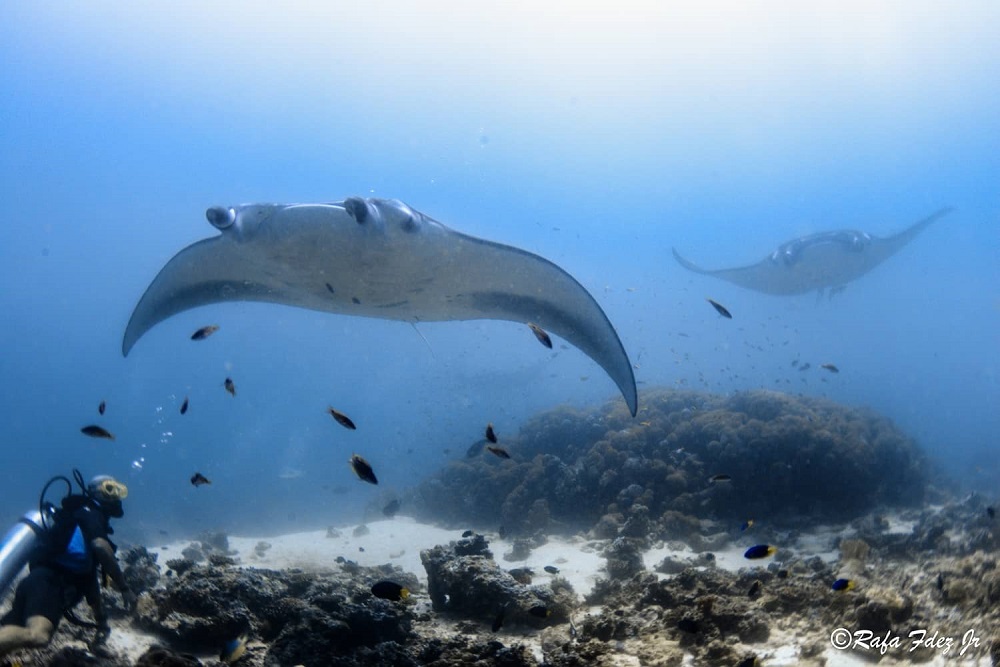
It is really hard to spend a liveaboard week in the Maldives and not see manta rays. It is true that there are certain time frames when they can be found in large groups and in specific places, as we already explained in our article about the Hanifaru Bay, but… they are very specific and localized periods of time and places for which we already have our Manta Expeditions
Another option is inside the atolls, our local guides know small lagoons where mantas usually gather to eat or matting, offering a great opportunity to dive and even snorkel with them.
Also inside the atolls, especially in the areas of the reef where there is less depth, we can find small rocks or coral promontories where a small ecosystem has been created in the middle of the sandy bottom. These “small cities” are inhabited by numerous species, especially marine fauna that seeks to hide in the nooks and crannies of the rocks. Some of these places have been converted into cleaning stations for mantas.
What is a cleaning station?
As we explained before, inside the atolls, we can find rocks and coral prominences inhabited by a wide variety of marine fauna. Some of these animals that live there are wrasses.
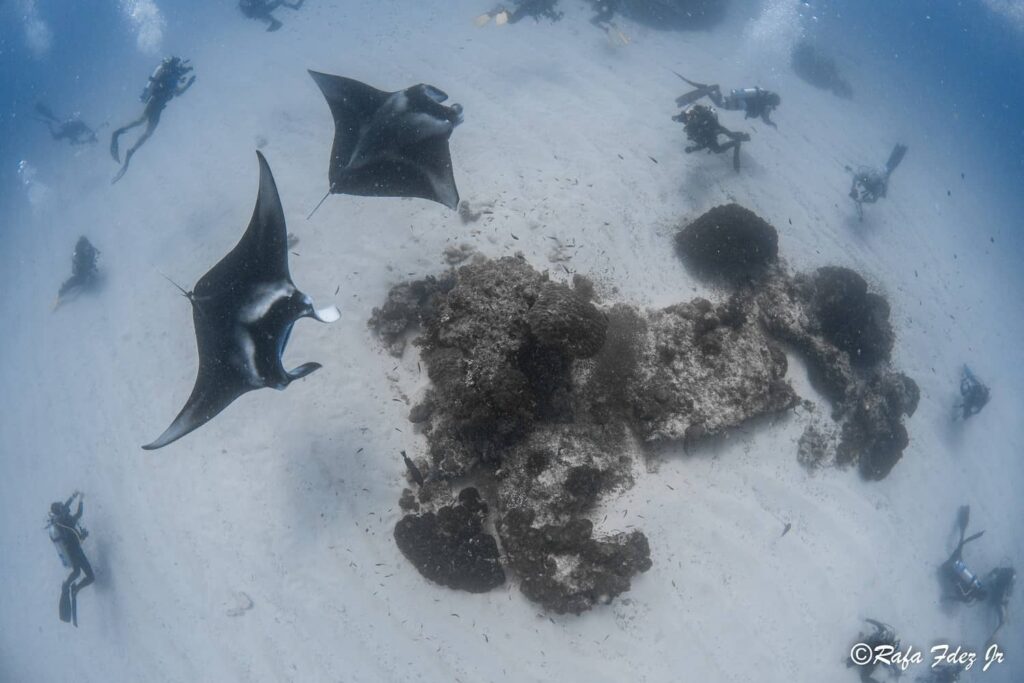
Small and elongated, these fish are fast swimmers, and with their small mouths, they feed on parasites that live on the skin of other fish. When they form large communities and settle in a place like these mounds we were talking about, we can begin to talk about a cleaning station, since this animal behavior is known as “cleaning symbiosis.”
How does a manta cleaning station work?
Basically, any place these “cleaner fish” inhabit becomes a cleaning station. They are very territorial and the rest of the fish that demand their services only have to go to that place to be dewormed. Depending on the size of the animal requesting said cleaning, more or less cleaning fish will be necessary.
Imagine the time it takes for a couple of cleaner fish to deworm a reef manta that can have a wingspan of 3 meters… Correct, for manta rays the perfect place is any of these mounds inhabited by a large community of cleaner fish at those who come swimming majestically and remain stationary or slowly “fly over” the station while an army of small cleaner fish devours the parasites that inhabit their skin, their gills and even their mouths.
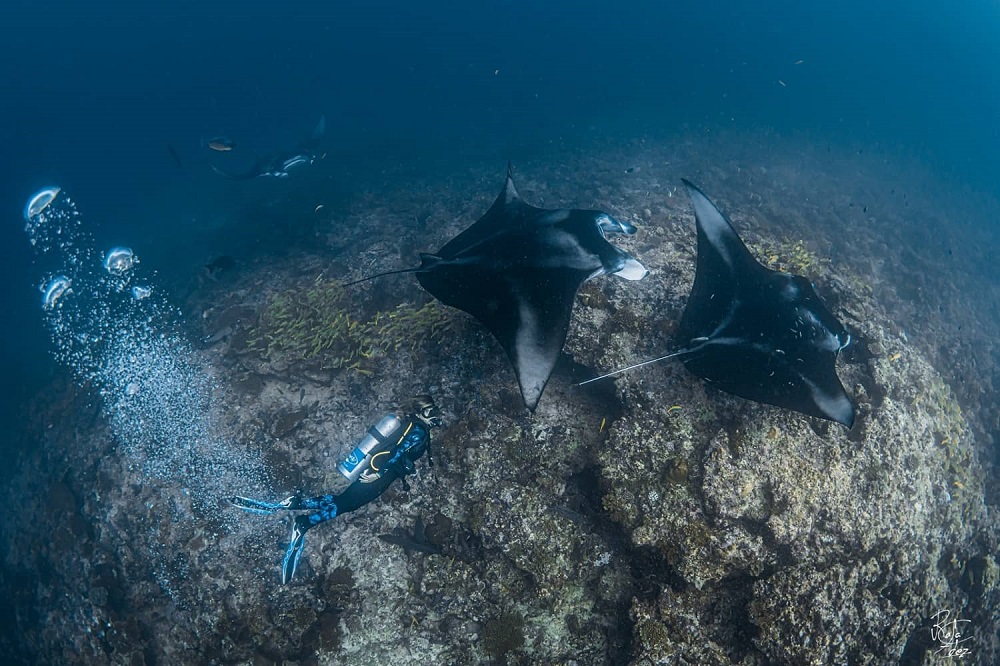
How do you discover a cleaning station?
In all the atolls, in their interior, in the shallower areas of the sandy bottom, we find scattered blocks of coral and rocks. In most of them, we find large concentrations of fauna, but… not all of them are inhabited by cleaner fish and they do not have to be a good place for a manta cleaning station to form.
Mantas have behaviors that, to a greater or lesser extent, respond to patterns. These patterns are usually fostered above all by water currents and the movement of their favorite food, plankton.
Depending on the season and the type of monsoon, the currents will favor the movement of plankton and consequently, that of mantas. There are many cleaning stations throughout the archipelago, large, small, more or less deep, near the channels, inside the lagoons… but there must be plankton nearby for the mantas to come to clean themselves.
It is the experience and popular knowledge of our team of local diving guides that allow us to decide, week after week, which cleaning stations we should go to in search of our dear friends. Week after week, our local diving guides draw up a plan and check in advance if it is feasible or not to be able to dive with them.
Of course, we cannot forget that these are wild animals in their natural habitat and there is a chance that they will not be found.
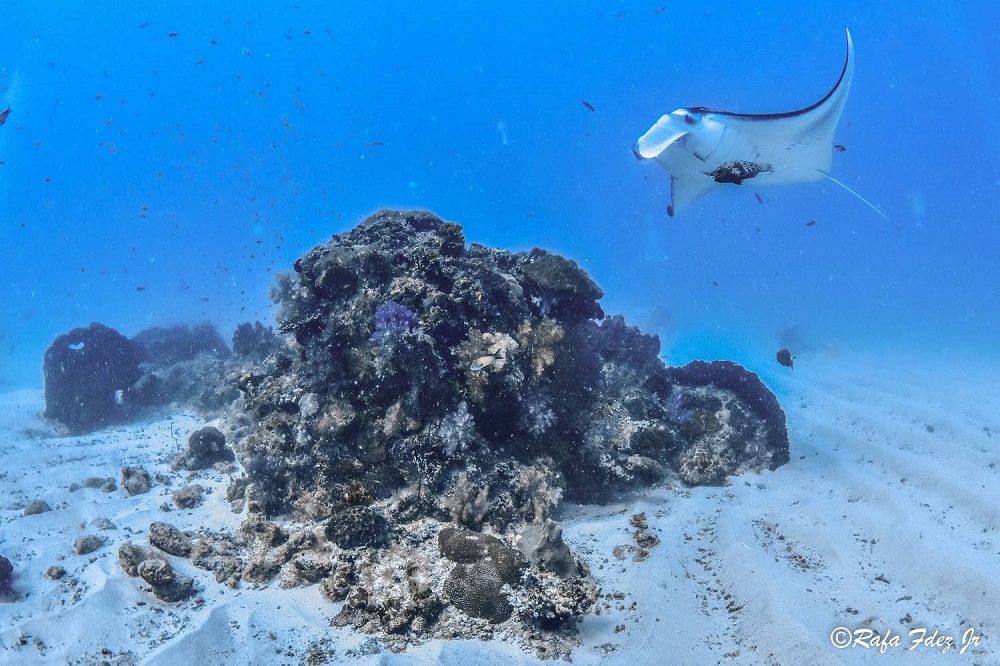
The perfect meeting place.
Manta rays are very curious, intelligent, and social animals, in fact, they have the largest brains of any other species of fish. Herd behavior cannot be attributed to them, but it is true that it is very common to find them in groups of several specimens or even dozens.
The cleaning stations are perfect to meet them, their way of swimming allows them to remain static or swim in circles on the mound. When there are several mantas it is inevitable to think when observing them that they establish a kind of shifts or rounds and they go past to be dewormed by clouds of cleaner fish.
If we are lucky and we coincide with the mating period, it is very likely to attend one of the most exciting events that we can witness with mantas, the mating trains.
The males start chasing a female to try to mate with her. The female, fleeing from her, causes the males to form a line behind her, creating what we know as “mating trains”. Attending this phenomenon and observing such behavior is something very special and unique.
How do you dive into a cleaning station?
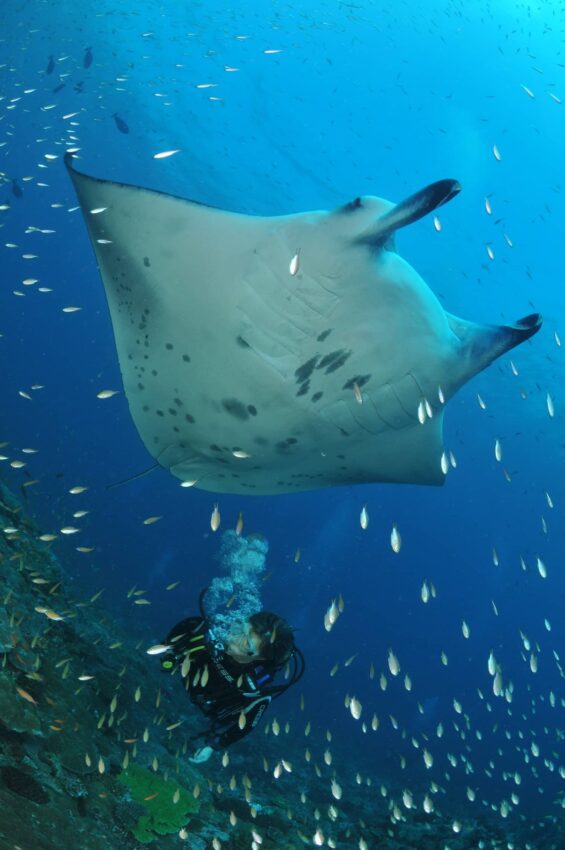
At Blue Force Fleet we are very rigorous when it comes to planning dives. Each dive is associated with a briefing in which we explain the dive site and its planning.
When we dive with certain species we carry out an additional briefing with which we try to spread our knowledge and experiences and take the opportunity to educate our divers about some important aspects such as conservation and marine fauna.
Given the possibility of encountering manta rays, our cruise director will give an informative talk about manta rays and how to interact with them.
Diving in a cleaning station is a static dive. The guides of each diving group will place their divers around the cleaning station, maintaining a safe distance from it. We will use the reef hooks to remain in neutral buoyancy thus avoiding contact with the environment and unnecessary kicking.
The most important thing when diving in a cleaning station is to avoid getting too close to or even hovering over the cleaning station itself. Our presence can alter the functioning of this delicate ecosystem, even scaring away cleaner fish with its dramatic consequences.
Of course, we must avoid any type of contact with the mantas. They will swim around us and pass over us, even touching us, but we must avoid contact with their skin as we could contaminate them and even infect them with some type of disease typical of humans.
They are calm and relaxed dives in which you only have to worry about enjoying the show. Something very exclusive and that can be done in very few places in the world.

We are happy to be a “Manta Trust Responsible Tourism Operator” working with the Manta Trust Organization with their program “Swim with Mantas“
